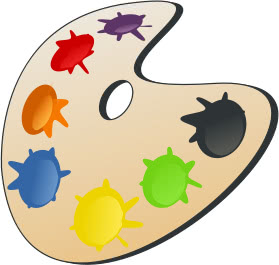Shanghai Street View: Color Coding

I’ve always thought Shanghai was quite a colorful place, and now it seems our city is determined to drive home that point with yet another color schemes in a growing series designed to keep us informed on everything from the quality of the air we breathe to the storms that keep our waterways full. This latest scheme will apply to traffic conditions on our congested roads, allowing us to quickly tell when to expect long delays and consider possible alternate routes.
This kind of color coding certainly isn’t unique to Shanghai, as other countries and cities around the world have similar ways for keeping ordinary citizens informed using symbols that are quick and easy to understand. But that said, our city seems to be embarking on a particularly aggressive color feast that could ultimately end up creating more confusion than clarity as everyone tries to figure out if the latest red alert applies to weather, air quality, traffic or perhaps something else.
All humor aside, I do like the idea of using colors to quickly convey important information, and more broadly speaking I also like the drive towards greater transparency that the timely and open release of this kind of information represents. The movement stands in sharp contrast to just a few years ago, when things like air quality were technically still called government secrets and the public was only selectively informed of such “sensitive” information.
According to the latest reports, Shanghai’s newest color-coding scheme will measure traffic congestion on a scale of 1 to 100, and assign one of 4 colors based on the number. The least congested conditions will get the green designation, followed by yellow and then orange. No one will be surprised to learn that the most congested ratings of 71-100 will be represented by red. Notifications will go out over TV, radio and other channels when the congestion level goes above 50, and steps will be taken to limit cars on the road when it reaches red.
Many people out there may be feeling a sense of deja vu at this latest scheme, which looks quite similar to another one rolled out 2 years ago to keep us updated on the local air quality. That scheme features a series of little pig-tailed girls whose color and expression change from a healthy and smiling green to a dirty and sobbing brown depending as the air quality deteriorates.
That means the girl’s colors can become yellow, then orange, red and finally purple before becoming brown when she’s crying profusely and gagging on serious smog. But that’s not the end of the coloring, which also extends to symbols on TV and websites for all kinds of extreme weather conditions, including cold, heat, wind, rain and thunderstorms.
Finally there’s our subway, which is also a smorgasbord of colors representing each of the dozen different lines now in operation. Each line technically has a number, but the floors of all transfer stations are plastered with colorful arrows telling riders where to go to the line they want.
These kinds of color codes are also present in the US, though they’re not nearly as widespread. The most obvious one is the terrorism-alert system rolled out after the September 11 attacks, which used colors to indicate the likelihood of a new attack. That scale contains 5 colors, with green as the lowest and moving up the scale to the highest red level, which indicates the risk is “severe”.
When I lived in Taipei for a few years, one of my most distinct memories of Taiwan’s frequent elections was also their use of a color-coding system to identify the party affiliation of different candidates. Thus, for example, all candidates from the Kuomintang would be labeled with one color, while Democratic Progressive Party candidates would get another. That allowed people to easily choose someone if they were unfamiliar with individual candidates on the ballot and only wanted to vote for a particular party.
I suspect that at least part of the reason for the frequent use of color might also be the differing levels of literacy among the broader populace, especially for massive cities like Shanghai where education levels may not be very high among some migrants from very poor areas. The widespread use of green to indicate “good” and red to mean “bad” obviously helps by providing a uniform standard across a wide variety of situations.
I’ll be the first to admit that these new symbols and color coding systems are quite helpful when making plans, even though I’m poking fun at them here. At the end of the day, the more information we can get the better, even if some of us might experience a new 21st century phenomenon of color fatigue in that process.
